Not many people know about Cáceres, a little provincial city in the heart of Extremadura. Having lived there myself, captivated by its beauty, I’m also a little reluctant to reveal its secrets. Still one must do their duty as a traveller to spread the news! Here’s my best picks of what to see and do in this seductive Spanish city.
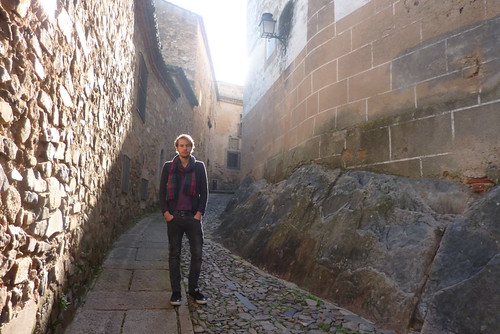
Stroll Around the Old Quarter
The first thing likely to catch the eyes of most visitors to this charming city is its magnificent old quarter. Referred to by the locals as “la parte antigua”, its blend of architecture dating from the Roman, Moor and Visigoth periods of history is definitely worth seeing. Start your adventure in Cáceres’ Plaza Mayor and take in the view of the entrance to the cobbled old streets under the 18th Century Arco de la Estrella (star archway). From there meander through the alleyways at your leisure but make sure you see the 13th Century church of Santa Maria, a shining example of Spain’s unique gothic style.
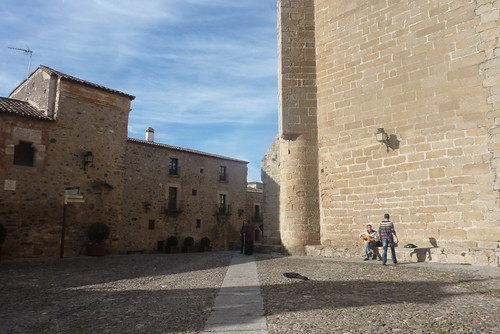
La Cacharreria
If the Spanish summer sun is beating down particularly hard during your wanderings around Cáceres’ ancient town do yourself a favour and head for refreshment at La Cacharreria. This little taperia is one of the best kept secrets in town thanks mainly to its mouth-watering dishes (did someone say red shrimp fritters?) and a wine cellar that would make even the estabilishments of Paris quiver. Grab a high table and get the sirloin with paprika.
La Cacharreria, Calle Orellana n 1 bajo izq.
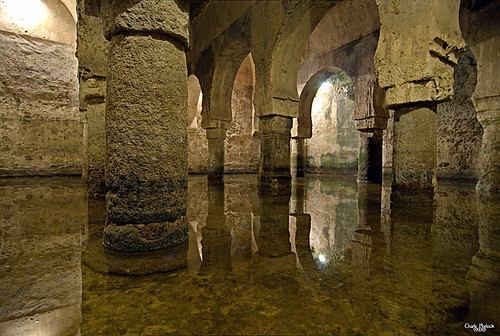
Museum of Cáceres
There’s plenty of free museums spread throughout the old quarter but the Museum of Cáceres, housed in La Casa de las Veletas, is a must-see due to its aljibe (ancient Moorish bath). Lit-up in floodlights, visitors can walk right down to its foundation and touch the very spot where the Moors’ bathed in the decadent archways and warm, heated baths centuries ago.

Baloncesto
Spain may be the World and European Champions of football but basketball is where the hearts and minds of this city’s locals lay. Watching their team, at home at the 8,000 seater stadium on Avenue de Montezuma, makes for a surprisingly fun night out. At only 10 Euros a ticket, head out with the rest of the city on Friday night and watch the players slam dunk their way to victory.
Coffee and Tapas at Liceo
My best choice for a café con leche in the whole of the town, this café cum restaurant is slightly off the tourist track (about two minutes walk towards the Colon roundabout) but well worth a visit. Head around mid-day and fight to get a seat among the business crowds pouring in to take portions of Spanish omelette, jamon tostadas and an array of bocadillos (sándwiches). Liceo’s modern decor and busy local atmosphere serve to remind that the city is still very much a thriving commercial hub in Extremadura.
Liceo, Avenida de la Virgen de la Montaña, 5.
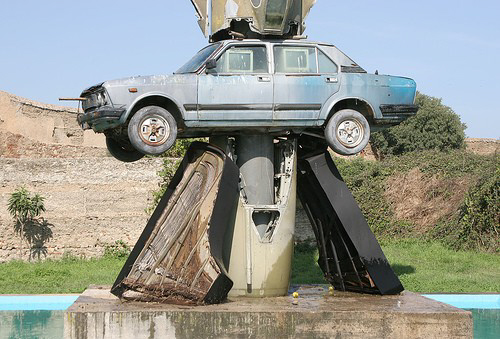
Los Barruecos
It might be a little way out of the city (about 14km) but the monument of Los Barruecos, with its heavy granite boulders, is another must-see for visitors to the region. Home in the summer to a colony of White Storks, Los Barruecos is best known for the German artist Wolf Vostell, who made his home there during the 60s. A pioneer of the fluxus movement, Vostell’s old house (an old wool washing mill) has an array of weird and wonderful sculptures and art installations to discover. Makes for a fun few hours.
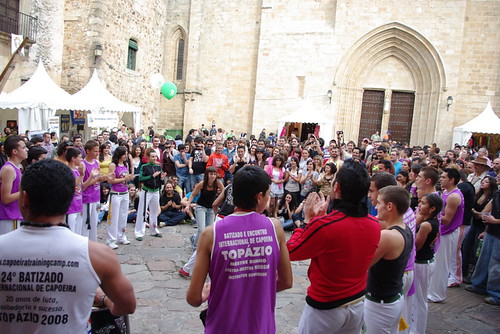 Catch a Concert in San Jorge
Catch a Concert in San Jorge
Head at the right time of the year and you might lucky enough to catch one of Cáceres’ free music festivals that take part slap bang in the centre of the old quarter. October has the Blues Festival and November the Irish Fleadh, but May is when the biggest influx of music lovers swarm to the city. That’s when the world famous Womad comes to town, showcasing the best in folk music from all over the globe. People come from all over Spain for this one.
Monfragüe National Park
Just like Los Barruecos you’ll have to travel a little further out of the city to reach Monfragüe , but you’re not likely to regret it. One of Spain’s major national parks, Monfragüe is famous with bird watchers for its population of raptors (it counts Spanish Imperial Eagles, Golden Eagles and Griffon Vultures among its residents). Elsewhere in the park you can enjoy spectacular views over the River Tagus, as well as hiking across its rocky outcrops and its oak tree forests.
Now I’ve divulged all the secrets of my favourite Spanish spots to you all there’s really nothing else for me to do but discover somewhere new. In a country as diverse as Spain I’m sure I’ll have little trouble!
Did I miss anything?
Guest blogger Will Peach is one of the site editors over at Gap Daemon, the gap year travel website for backpackers and young travellers. You can also catch him writing on My Spanish Adventure about what to see in Spain while learning the language and living on the cheap.


Be the first to comment